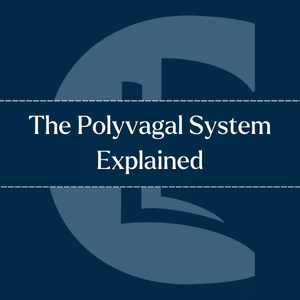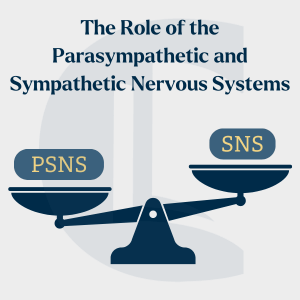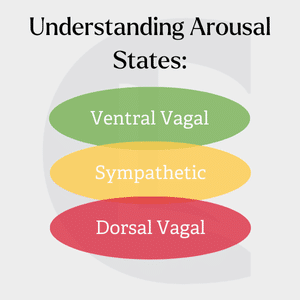Trauma Informed Practice Course
The Competence and Confidence to Work with Trauma in Your Practice.
The following article is taken from our Trauma-Informed Practice course.

The Competence and Confidence to Work with Trauma in Your Practice.
The Polyvagal Theory offers a profound insight into how the nervous system responds to stress and trauma. Devised by Dr. Stephen Porges, this theory explores the intricate connections between our physiological states and psychological experiences, particularly in the context of trauma. For UK-based counsellors and psychotherapists, like you, understanding the Polyvagal System can significantly enhance trauma-informed practice, offering tools to better support clients dealing with stress and trauma-related issues.
The Polyvagal System Explained: A Guide for Counsellors and Psychotherapists
By engaging with the concepts of the Polyvagal System, practitioners will be able to:

Dr Stephen Porges introduced the polyvagal theory, rooted in evolutionary, neurological, and psychological frameworks. This theory emphasises the role of the vagus nerve—a critical component of the parasympathetic nervous system—in regulating emotional responses, social behaviour, and the body’s reaction to perceived threats.
Despite the modern context in which we live, our bodies and nervous systems are still wired for survival in a more primitive, tribal environment. This evolutionary lag means our bodies often respond to stress in ways that were adaptive for early human environments but may be less so today. For instance, the same physiological mechanisms that prepared our ancestors to fight or flee from danger can be triggered by much less threatening modern-day stressors, leading to chronic stress or trauma responses in some individuals.

The parasympathetic nervous system (PSNS), often called the “rest-and-digest” system, is essential for maintaining homeostasis and promoting recovery after stress. In contrast, the sympathetic nervous system (SNS) is responsible for the “fight-or-flight” response, preparing the body for action in the face of perceived threats. Both systems are crucial, but their balance is key to psychological and physical health.
During a threat, the SNS activates, causing physiological changes such as dilated pupils, increased heart rate, and inhibited digestion. These responses are designed to prepare the body for immediate physical action. Once the threat passes, the PSNS helps the body return to a calm state, often called the “window of tolerance.” This concept is crucial for trauma-informed practice, as it represents the range within which individuals can effectively manage stress without becoming overwhelmed.
A vital concept within the Polyvagal Theory is neuroception, the unconscious process by which the nervous system assesses environmental risk and safety. Neuroception determines whether the body will activate the social engagement system, engage in fight-or-flight responses, or enter a shutdown mode. The vagus nerve, with its two branches—ventral vagal and dorsal vagal—plays a pivotal role in these processes. The ventral vagal branch is associated with social engagement and operates when we feel safe. In contrast, the dorsal vagal branch is activated during life-threatening situations, leading to a freeze response.
The Polyvagal Chart, often represented through a colour-coded system (green, yellow, red), helps practitioners visualise the different arousal states in clients:

The Polyvagal System Explained – A Guide for Counsellors and Psychotherapists
The Polyvagal Theory offers a vital framework for understanding how trauma and stress impact both the mind and body. For UK-based counsellors and psychotherapists, integrating this theory into practice can enhance your ability to help clients navigate their stress responses and move towards recovery. By understanding and identifying the different physiological states outlined in the Polyvagal Theory, you can tailor your therapeutic approaches to meet the specific needs of your clients, fostering a safer and more effective therapeutic environment in your practice.
Practitioners are encouraged to read Stephen Porges’ work and explore resources that delve into the practical applications of the Polyvagal Theory in therapeutic settings for further exploration.
Porges, S. (2011). The Polyvagal Theory: Neurophysiological Foundations of Emotions, Attachment, Communication, Self-Regulation. New York: W.W. Norton.
van der Kolk, B. (1999). Foreword. In The Polyvagal Theory: Neurophysiological Foundations of Emotions, Attachment, Communication, Self-Regulation (pp. ix-xii). New York: W.W. Norton.
Porges, S. (2022). Stephen Porges – About. [Online]. Available at: https://www.stephenporges.com/about [Accessed 19 May 2022].
Notice any broken link or issues with this resource? Kindly let us know by email
Email us